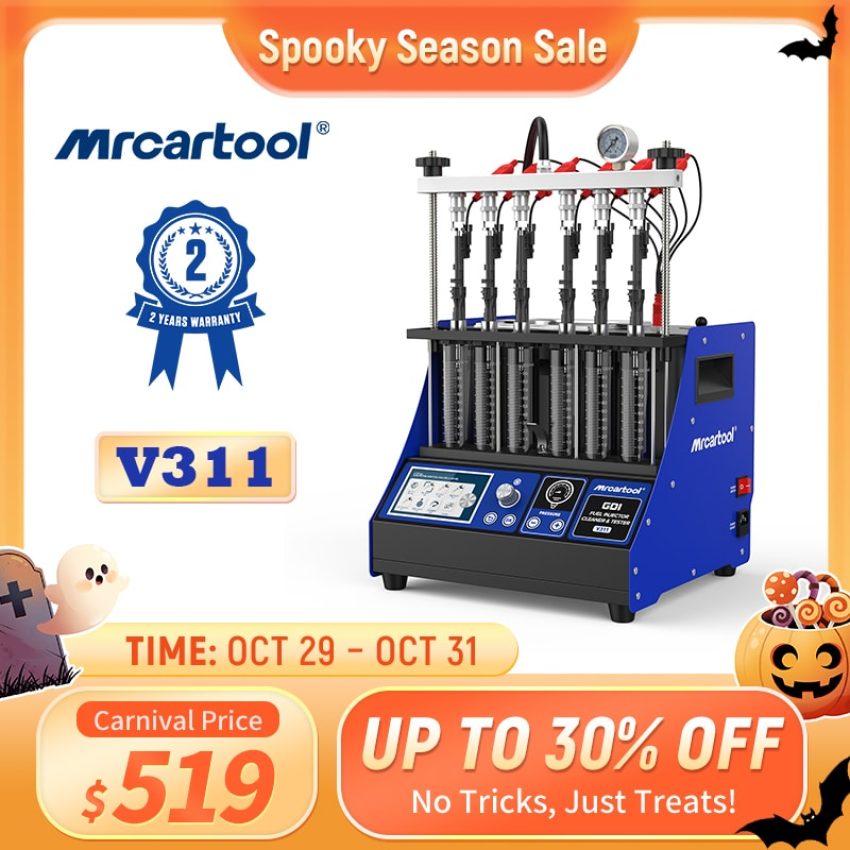Kasdien važiuojant transmisija veikia beveik visada. Ji ne tik perduoda variklio galią ratams, bet ir reguliuoja pavarų santykį, kad užtikrintų optimalų veikimą įsibėgėjant, greitėjant ir važiuojant dideliu greičiu. Tačiau automobiliui sukaupus ridą, transmisija gali susidurti su įvairiomis pavarų dėžės problemomis. Dažniausiai pasitaikančios problemos yra šios: perjungimo problemos, neįprastas triukšmas, skysčio nuotėkis ir sunkumai įjungiant pavaras. Jei šie gedimai nedelsiant nepašalinami, jie gali neigiamai paveikti vairavimo patirtį ir lemti didesnes remonto išlaidas.
Šiame straipsnyje aprašysime dažniausiai pasitaikančias transmisijos problemas ir jų sprendimo būdus, padėsiančius veiksmingai prižiūrėti transporto priemonę ir užtikrinti vairavimo saugumą.
Kas yra transmisija?
Transmisija, dar vadinama pavarų dėže, yra pagrindinis automobilio transmisijos komponentas. Ji perduoda variklio galią varantiesiems ratams ir reguliuoja pavarų santykį pagal automobilio greitį ir kelio sąlygas. Tai leidžia automobiliui turėti pakankamą sukimo momentą įsibėgėjant, o važiuojant didesniu greičiu išlaikyti sklandų veikimą ir degalų naudojimo efektyvumą.
Be to, prireikus transmisija atjungia variklį nuo ratų, taip pagerindama važiavimo sklandumą ir sumažindama degalų sąnaudas. Įprasti transmisijų tipai: mechaninės transmisijos, automatinės transmisijos, bepakopės transmisijos (CVT) ir dvigubos sankabos transmisijos (DCT). Kiekvienas tipas turi savų privalumų ir apribojimų, tačiau visi jie atlieka svarbų vaidmenį gerinant vairavimo patirtį ir ilginant automobilio eksploatavimo laiką.
Nepakankamas arba per didelis skysčio kiekis: Dėl nepakankamo pavarų dėžės skysčio hidraulinis siurblys sukuria nestabilų slėgį, todėl pavara negali tinkamai įsijungti. Dėl skysčio pertekliaus padidėja alyvos temperatūra, todėl susidaro per didelis slėgis ir atsiranda neįprasta sandariklių apkrova.
Senstelėjęs arba sugedęs skystis: Laikui bėgant senas transmisijos skystis gali tapti rūgštus, putojantis arba užterštas šiukšlėmis. Dėl to sumažėja tepimo ir hidraulinio slėgio efektyvumas, hidrauliniai komponentai reaguoja lėtai, padidėja krumpliaračių ir trinties plokštelių nusidėvėjimas, todėl prastai perjungiamos pavaros.
Užsikimšę alyvos kanalai: Gali užsikimšti vožtuvo korpuso kanalai, filtras arba siurblys. Dėl to hidraulinės pavaros veikia lėtai arba netolygiai, todėl pastebimi perjungimo smūgiai.
Solenoidinio vožtuvo arba vožtuvo korpuso gedimas: Vėluojanti solenoido reakcija arba anglies sankaupos vožtuvo korpuse gali lemti nepakankamą slėgį tam tikrose pavarose. Dėl to perjungimas šokinėja arba vėluoja ir TCU gali sukelti gedimo kodus.
Jutiklio arba TCU gedimas: Dėl neteisingų jutiklių signalų TCU gali neteisingai įvertinti perjungimo laiką, todėl pavarų perjungimas gali būti trūkčiojantis, vėluojantis arba netolygus. Programinės įrangos loginės klaidos arba programos anomalijos taip pat gali turėti įtakos transmisijos perjungimo strategijai.
Kaip ištaisyti pavarų dėžės vėlavimą?
Patikrinkite, ar skysčio lygis atitinka gamintojo rekomenduojamas ribas. Jei skystis senas arba užterštas, visiškai jį pakeiskite ir įpilkite naujo, specifikacijas atitinkančio skysčio, kad atkurtumėte hidraulinės sistemos veikimą ir pavarų tepimą.
Išvalykite arba pakeiskite transmisijos filtrą, kad užtikrintumėte tinkamą skysčio tekėjimą
Išimkite filtrą ir išvalykite visas šiukšles ar metalo drožles. Jei reikia, pakeiskite filtrą. Užtikrinus netrukdomą skysčio tekėjimą, pagerėja hidraulinio slėgio stabilumas ir skatinamas sklandus pavarų įjungimas.
Diagnostikos įrankiu nuskaitykite gedimų kodus ir patikrinkite solenoidus, jutiklius arba TCU.
Naudokite OBD arba TCU diagnostikos įrankį, kad patikrintumėte realaus laiko duomenis ir gedimų kodus. Įsitikinkite, kad visi elektroniniai valdymo komponentai veikia tinkamai. Ištrynę visus klaidų kodus, dar kartą išbandykite perjungimą. Jei reikia, pakeiskite bet kokius sutrikimų turinčius komponentus.
Patikrinkite ir suremontuokite arba pakeiskite vožtuvo korpusą ir vidinius mechaninius komponentus.
Išardykite vožtuvo korpusą ir pašalinkite visas anglies nuosėdas ar šiukšles. Patikrinkite, ar nesusidėvėjo krumpliaračiai, frikcinės plokštelės ir sankabos komponentai. Pakeiskite visas pažeistas dalis, kad atkurtumėte sklandų perjungimą ir išlaikytumėte tikslų hidraulinį valdymą.
Susidėvėję krumpliaračiai, guoliai arba sankabos plokštelės: Ilgalaikis naudojimas arba važiavimas didele apkrova gali nusidėvėti krumpliaračių dantys ir padidėti guolių tarpai. Taip pat gali susidėvėti sankabos plokštelių trinties medžiaga, todėl gali atsirasti metalo į metalą ar spragtelėjimo garsai. transmisijos skysčio: Dėl žemo skysčio lygio hidraulinėje sistemoje sumažėja slėgis, todėl pavarų dėžė įjungiama sklandžiai. Užterštas skystis, pavyzdžiui, metalo drožlės, šiukšlės ar suskilusi alyva, didina trintį ir sukelia neįprastus garsus bei nestabilų pavarų perjungimą.
Sugedęs alyvos siurblys arba užsikimšę alyvos kanalai: Susidėvėjusios siurblio mentės arba šiukšlės siurblio korpuse gali sukelti nestabilų arba mažą alyvos slėgį. Užsikimšę filtrai ar kanalai dar labiau apriboja skysčio srautą, todėl hidraulinės pavaros veikia netinkamai ir kelia triukšmą.
Solenoidinio vožtuvo arba vožtuvo korpuso problemos: Dėl užstrigusio ar pažeisto elektromagnetinio vožtuvo ir anglies sankaupų ar susidėvėjimo vožtuvo korpuse gali netolygiai pasiskirstyti alyvos slėgis. Dėl to pastebimi perjungimo smūgiai, kuriuos lydi neįprasti garsai.
Atsilaisvinę transmisijos laikikliai, perduodantys vibraciją į saloną: Dėl pasenusių laikiklių arba atsilaisvinusių varžtų pavarų dėžės sujungimas su važiuokle gali būti nestabilus. Važiuojant dideliu greičiu arba perjungiant pavaras, vibracijos persiduoda į saloną ir sukelia dūzgiančius arba žemo dažnio rezonansinius garsus.
Naudokite transmisijos skystį, atitinkantį transporto priemonės gamintojo specifikacijas. Reguliariai keičiant skystį pailgėja pavarų ir trinties plokštelių tarnavimo laikas, o valant skysčio kanalus išvengiama užsikimšimo nuo šiukšlių.
Naudodami diagnostikos įrankį patikrinkite elektroninę valdymo sistemą
Skaitykite gedimų kodus naudodami OBD arba TCU diagnostikos įrankį. Patikrinkite elektromagnetinių vožtuvų, jutiklių ir valdymo modulių būklę. Pašalinus gedimus arba iš naujo nustačius sistemą atkuriamas hidraulinio slėgio valdymo tikslumas.
Klausydamiesi raskite neįprastus garsus ir patikrinkite pavaras, guolius ir sankabos komponentus.
Naudokite mechaniko stetoskopą arba profesionalius diagnostikos įrankius įvairiomis sąlygomis, pavyzdžiui, važiuojant nedideliu greičiu tuščiąja eiga, dideliu greičiu arba perjungiant pavaras. Jei reikia, išardykite ir pakeiskite visas pažeistas sudedamąsias dalis, kad atkurtumėte sklandų veikimą.
Patikrinkite, ar nėra laisvų laikiklių, kronšteinų ir jungiamųjų komponentų, ir, jei reikia, juos sutvirtinkite arba pakeiskite.
Įsitikinkite, kad tvirtinimo varžtai priveržti gamintojo nurodytu sukimo momentu. Nedelsdami pakeiskite pasenusius arba pažeistus laikiklius, kad sumažintumėte vibracijos perdavimą ir pašalintumėte neįprastą triukšmą.
Susidėvėjusi sankaba arba sukimo momento keitiklis: Ilgai naudojant arba važiuojant didele apkrova gali sumažėti sankabos plokštelių trintis arba susidėvėti sukimo momento keitiklio vidiniai komponentai. Dėl to gali sutrikti sklandus galios perdavimas įsibėgėjant arba įjungiant pavarą, todėl variklis gali užgesti.Nepakankamas hidraulinis slėgis: Dėl mažo kiekio arba sugedusio transmisijos skysčio sumažėja hidraulinės sistemos slėgis, todėl sankaba arba sukimo momento keitiklis negali tinkamai veikti. Dėl to perjungiant pavaras arba įsibėgėjant varikliui galia perduodama nestabiliai, o tai gali lemti variklio užgesimą.
Variklio ir pavarų dėžės valdymo logikos neatitikimas: Kai variklio sūkių dažnis neatitinka pavarų dėžės perjungimo logikos, pavarų perjungimas gali vėluoti arba būti staigus. Dėl to įjungus pavarą variklis gali užgesti arba drebėti.
TCU (transmisijos valdymo bloko) gedimas: TCU programos klaidos arba vidinių komponentų gedimai gali turėti įtakos perjungimo komandų vykdymui. Dėl to gali vėluoti pavarų perjungimas arba sutrikti hidraulinis valdymas, galiausiai variklis gali užgesti.
Ką daryti, jei automatinė pavarų dėžė užstringa?
patikrinkite, ar nesusidėvėjo sankabos plokštelės arba sukimo momento keitiklis, ir prireikus pakeiskite.
Išardykite sankabą arba sukimo momento keitiklį, kad patikrintumėte frikcinių plokštelių storį ir nusidėvėjimą. Nedelsdami pakeiskite smarkiai susidėvėjusias ar pasenusias sudedamąsias dalis, kad atkurtumėte galios perdavimą ir užtikrintumėte stabilų transporto priemonės užvedimą.
Patikrinkite transmisijos skysčio slėgį ir įsitikinkite, kad hidraulinė sistema veikia tinkamai.
Išmatuokite alyvos slėgį ir patikrinkite transmisijos skysčio būklę. Jei reikia, pakeiskite skystį tokiu, kuris atitinka gamintojo specifikacijas. Tinkamo hidraulinės sistemos slėgio palaikymas užtikrina, kad sankaba ir sukimo momento keitiklis veiktų sklandžiai ir jautriai.
Diagnostikos įrankiu patikrinkite TCU ir variklio valdymo modulį, atnaujinkite arba sukalibruokite programinę įrangą.
Skaitykite gedimų kodus ir realaus laiko duomenis naudodami OBD arba TCU diagnostikos įrankį, kad nustatytumėte bet kokias valdymo modulių problemas. Jei aptinkama programinės įrangos problemų, atnaujinkite programą arba sukalibruokite parametrus, kad užtikrintumėte tinkamą variklio ir pavarų dėžės koordinavimą, kad pavarų perjungimas būtų sklandus ir stabilus.
Susidėvėjusios sankabos plokštelės, frikcinės plokštelės arba juostos: Ilgai naudojant arba važiuojant didele apkrova, gali smarkiai susidėvėti sankabos plokštelės arba frikcinės plokštelės. Dėl to sumažėja jų sukibimo jėga, todėl perjungiant pavaras ar greitėjant gali slysti ir nukentėti galios perdavimas.
Pasenęs arba užterštas transmisijos skystis: Senas skystis mažina tepimo ir hidraulinį našumą. Skystyje esantys teršalai ar metalo drožlės didina trintį, todėl trinties plokštelės slysta, o hidraulinės pavaros veikia netolygiai.
Nepakankamas hidraulinės sistemos slėgis: Dėl susidėvėjusių alyvos siurblių, žemo skysčio lygio arba užsikimšusių alyvos kanalų gali būti nepakankamas hidraulinis slėgis. Dėl to sankaba ir diržai negali tinkamai veikti, todėl perjungiant pavaras arba greitėjant slysta.
Vidiniai mechaniniai pažeidimai: Susidėvėję, deformuoti ar pažeisti krumpliaračiai, frikcinės plokštelės ar sankabos komponentai turi tiesioginės įtakos galios perdavimui. Dėl to perjungiant pavaras jos slysta ir gali atsirasti transporto priemonės vibracija.
Kaip priversti transmisiją nustoti slysti?
Pakeiskite susidėvėjusias sankabos plokšteles arba frikcines plokšteles
Išardykite sankabą ir frikcines plokšteles, kad patikrintumėte jų nusidėvėjimą ir storį. Nedelsdami pakeiskite smarkiai susidėvėjusias ar pasenusias sudedamąsias dalis, kad būtų atkurta tinkama sukibimo jėga ir sklandus pavarų perjungimas.
Pakeiskite transmisijos skystį ir išvalykite alyvos kanalus bei filtrą
Visiškai išleiskite seną arba užterštą skystį, išvalykite alyvos kanalus ir filtrą. Pripilkite gamintojo specifikacijas atitinkančio transmisijos skysčio, kad užtikrintumėte stabilų hidraulinės sistemos slėgį ir optimalų tepimo našumą.
Patikrinkite hidraulinę sistemą ir užtikrinkite tinkamą alyvos slėgį
Išmatuokite alyvos slėgį ir patikrinkite, ar alyvos siurblys ir kanalai nėra užsikimšę arba nesandarūs. Prireikus suremontuokite arba pakeiskite pažeistas sudedamąsias dalis, kad būtų atkurtas normalus hidraulinės sistemos veikimas.
Patikrinkite vidinius krumpliaračius ir sankabos komponentus ir, jei reikia, juos suremontuokite arba pakeiskite.
Išardykite krumpliaračius ir sankabos sudedamąsias dalis ir patikrinkite, ar jos nėra susidėvėjusios, deformuotos arba pažeistos. Nedelsdami suremontuokite arba pakeiskite bet kokias sugedusias dalis, kad būtų atkurtas efektyvus galios perdavimas ir pavarų dėžės veikimas.
Pasenę sandarikliai, alyvos sandarikliai arba tarpikliai: Laikui bėgant ir veikiant aukštai temperatūrai, sandarikliai ir alyvos sandarinimo medžiagos gali senėti arba kietėti. Dėl to atsiranda skysčio nuotėkis, sumažėja hidraulinės sistemos slėgis ir tai neigiamai veikia pavarų perjungimo veikimą.
Pažeista transmisijos dėžė arba jungiamosios dalys: Dėl įtrūkimų transmisijos korpuse arba nevienodo jungiamųjų dalių įtempimo gali ištekėti skystis. Dėl to taip pat gali atsirasti vidinių mechaninių pažeidimų.
Netinkamas montavimas, dėl kurio blogai užsandarinama: Jei sandarikliai išdėstyti neteisingai arba varžtai priveržti netinkamai, skystis gali prasiskverbti pro tarpus. Dėl to sumažėja hidraulinės sistemos slėgis ir sumažėja bendras pavarų dėžės efektyvumas.
Kaip sutvarkyti transmisiją, iš kurios teka alyva?
Pakeiskite susidėvėjusius arba pažeistus sandariklius ir tarpiklius.
Patikrinkite visus sandariklius ir tarpiklius, o susidėvėjusius ar pažeistus nedelsdami pakeiskite. Taip atkuriamas pavarų dėžės sandarumas ir išvengiama alyvos nuotėkio.
Patikrinkite, ar transmisijos korpusas nėra įtrūkimų ar deformacijų, ir, jei reikia, pataisykite arba pakeiskite.
Atidžiai patikrinkite, ar transmisijos dėžėje nėra įtrūkimų ar deformacijų. Nedelsdami suremontuokite arba pakeiskite pažeistas sudedamąsias dalis, kad išvengtumėte alyvos nuotėkio ir tolesnių mechaninių pažeidimų.
Užtikrinkite, kad sandarikliai būtų tinkamai sumontuoti, ir priveržkite varžtus nurodytu sukimo momentu.
Montuodami tinkamai padėkite sandariklius ir laikykitės gamintojo nurodyto visų varžtų sukimo momento. Taip užtikrinamas patikimas sandarinimas ir išvengiama pasikartojančių alyvos nuotėkių.
Išvada
Reguliariai tikrindami pavarų dėžės skystį, hidraulinį slėgį, vidinius komponentus ir elektroninę valdymo sistemą bei nedelsdami pakeisdami susidėvėjusias ar susidėvėjusias dalis, galite veiksmingai prailginti pavarų dėžės tarnavimo laiką ir pagerinti vairavimo patirtį. Laikydamiesi gerų transmisijos techninės priežiūros įpročių, ne tik užtikrinsite, kad jūsų automobilis veiktų patikimai, bet ir kad kiekvienas važiavimas būtų sklandus ir nekeltų rūpesčių.
Jei norite Sužinokite daugiau apie automobilių techninės priežiūros įrangą, spustelėkite žemiau, norėdami susisiekti su Winnie ir nedelsdami pasinaudokite išskirtine nuolaida.
📩 Susisiekite su Winnie dabar dėl nuolaidų ir pirkimo užklausų!








































